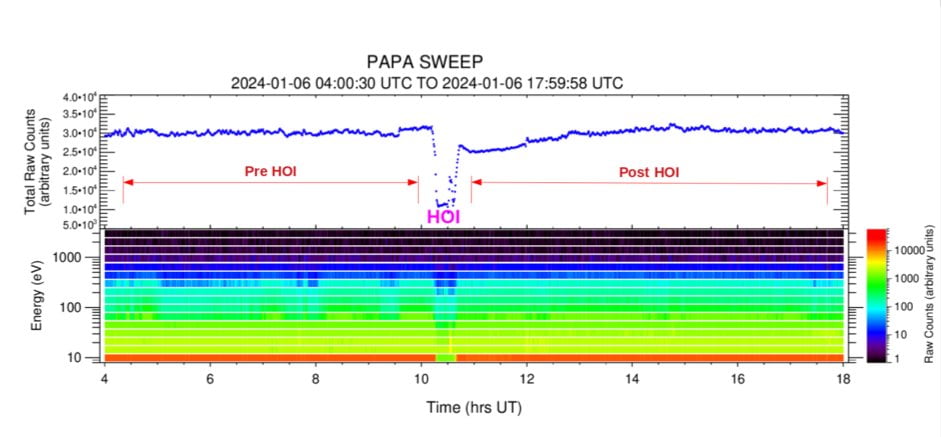PAPA payload ( Plasma Analyser Package for Aditya ) on Aditya L1 is now functioning at its maximum capacity of 5 Kv and has initiated the transmission of data of high quality. On 8 December 2023, the payload was switched on for the first time only for 10 hours during the cruise phase.
During the cruise phase, the functionality of the payload was assessed to evaluate its in-orbit condition. Both the primary and backup DC-DC converters were utilized for testing. It is noteworthy that the high voltage (5 kV) was not enabled during this specific cruise phase.
On December 11, 2023, ISRO planned to switch on the high voltage (5 kV) for the first time. The process was conducted gradually, step by step, with close monitoring of all parameters to ensure careful oversight. Now PAPA payload is healthy and sending good-quality data.
More About PAPA Payload

The Plasma Analyser Package for Aditya (PAPA) installed on the Aditya-L1 spacecraft serves as an energy and mass analyzer payload designed to observe the flux of solar wind electrons and ions. It incorporates two sensors, namely the Solar Wind Electron Energy Probe (SWEEP) and the Solar Wind Ion Composition Analyser (SWICAR). Investigating the flux and energies of electrons and ions contributes to advancing our comprehension of solar dynamics, space weather events, and their potential effects on spacecraft and the solar system.
PAPA Payload Data
The payload has been in operation since December 12, 2023. Figure 1 displays its observations during the Halo Orbit Insertion (HOI) phase. The figure displays the time series of SWEEP electron energy spectra and total count observed throughout the Halo Orbit Insertion (HOI) phase, as well as the periods before and after it.

Figure 2 presents the time series of SWICAR ion energy spectra and integrated counts within the designated timeframe. It showcases the anticipated patterns of ion energy spectra under typical space weather conditions.

The PAPA payload data indicated the presence of Coronal Mass Ejection (CME) incidents, notably on December 15, 2023, and between February 10 and 11, 2024, as depicted in Figures 3 and 4. The CME occurrence on December 15, 2023, was singular. Conversely, the fluctuations observed in electron and ion counts during February 10-11, 2024, stem from several minor events, each showcasing distinct time variations in electron and ion counts.


Source: ISRO
For more details visit ISRO source.
You can track Aditya L1 status: Live tracking and location of Aditya L1
Read also Indian Startup Developing Private Astronaut Training Facility for Space Tourism in Navi Mumbai

